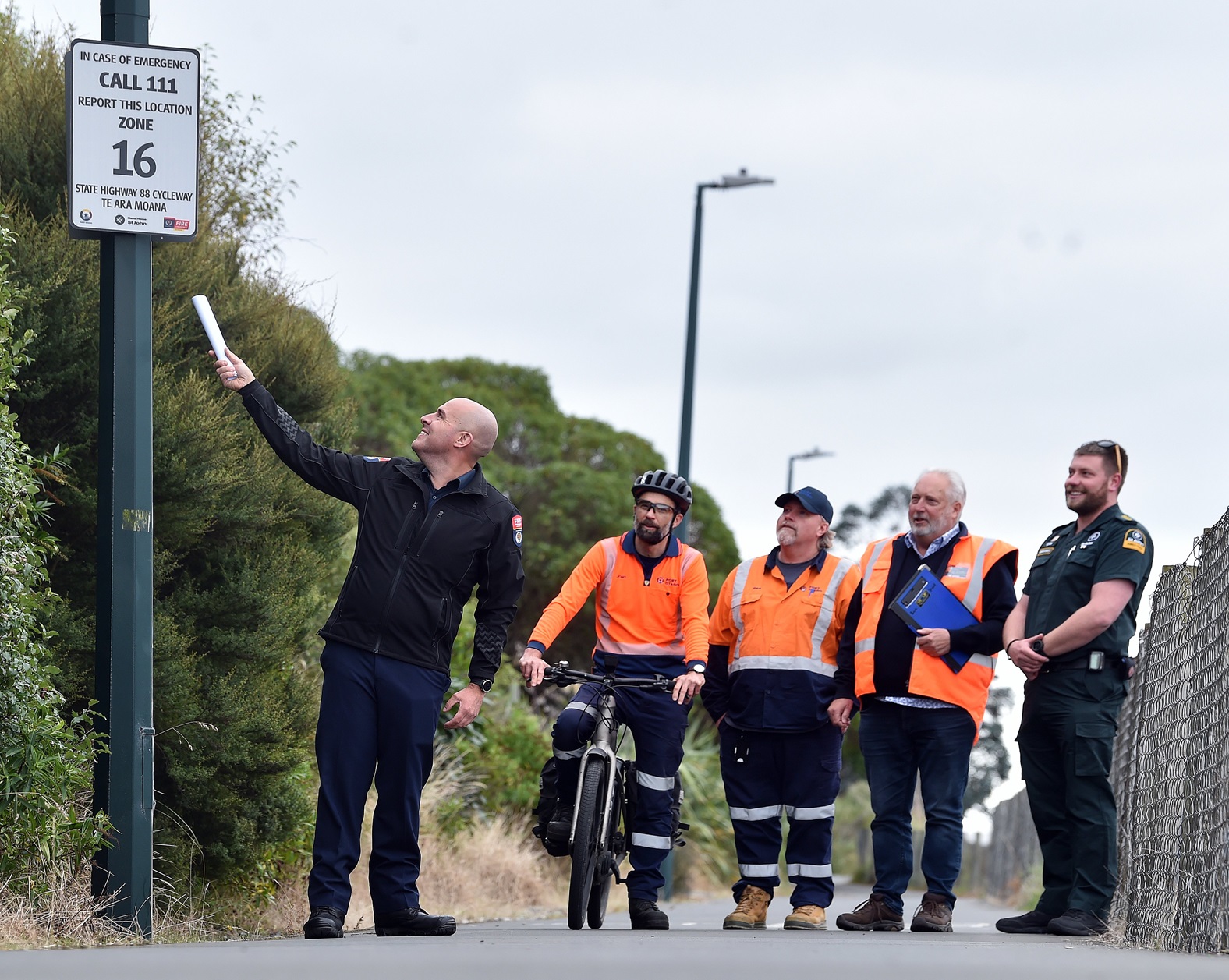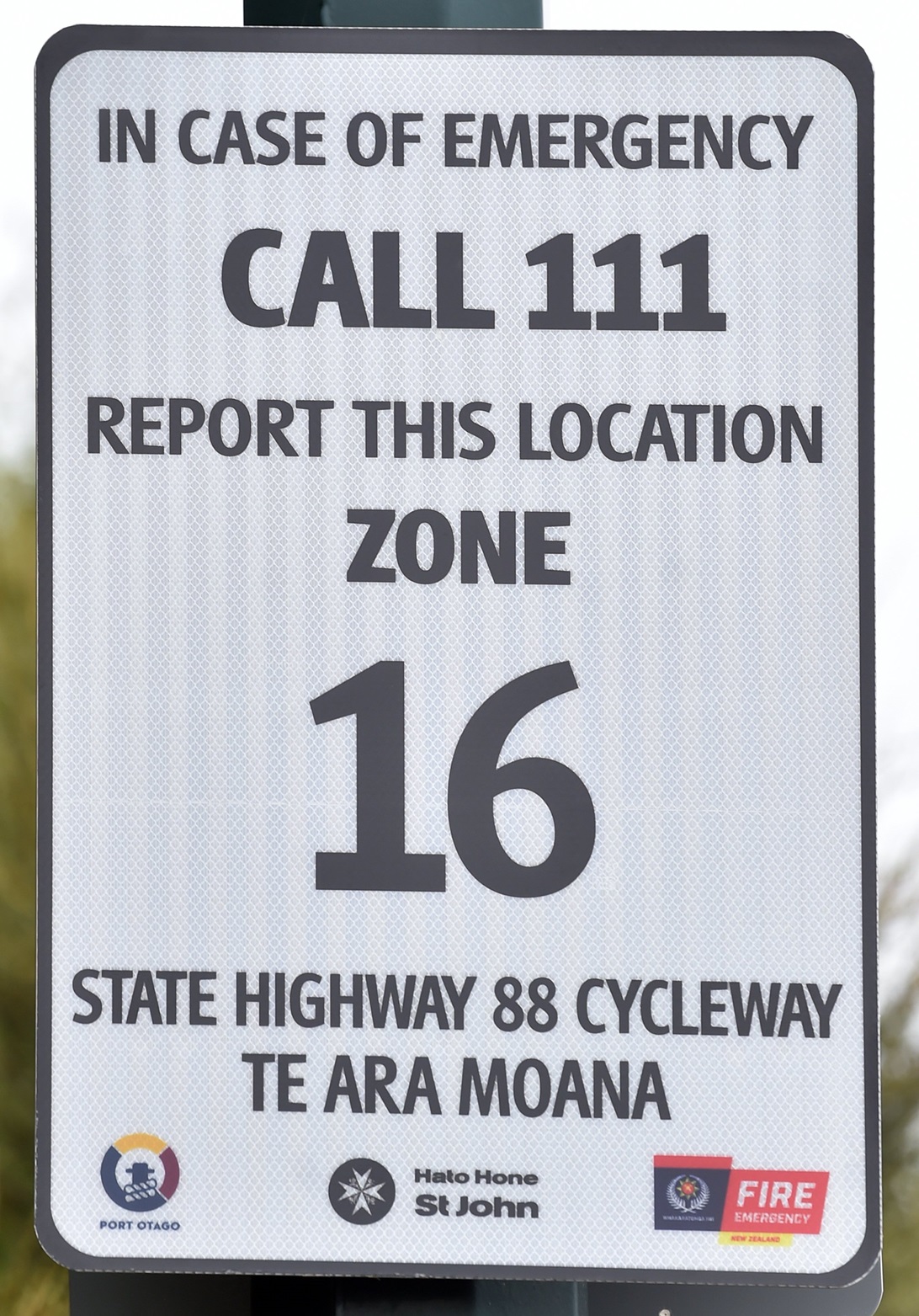
Port Chalmers Volunteer Fire Brigade Chief Fire Officer Stephen Hill said before the installation of the signs — which separate the cycleway into 40 zones — emergency services would spend a lot of time trying to locate a person on the track.
"If you get tourists, they could say they're just near Port Chalmers, when they’re actually [in Maia]."
Getting the signs installed had been a long process. Emergency services had been asking for them since construction began on the cycle track.
It was not until Port Otago pledged $10,000 for the project that installation was approved.

Two people were out for a bike ride about 7pm last year when one cyclist got her handlebar hooked in the fence. She fell off and was seriously injured.
However, when emergency services went to locate her they had trouble finding the exact location.
"We want to publicise the fact that it's here now, so people know if they do need help they can ring and tell us what zone they are at," CFO Hill said.
Port Otago trainer Ryan Brayshaw said it was a worthy cause for the port to get behind.

In an emergency, people could now tell emergency services what the closest zone was, and emergency services could go straight to the site, reducing their response time.
There are 40 signs in total, starting from near St Andrew St in Dunedin and continuing to Port Chalmers.
Fulton Hogan supplied the 40 double-sided signs for the project.
Hato Hone St John watch operations manager Cam Third said they received quite a few calls to help people injured on the trail.
"Having the signs in, it gets the right care to the right person in the right amount of time," he said.












